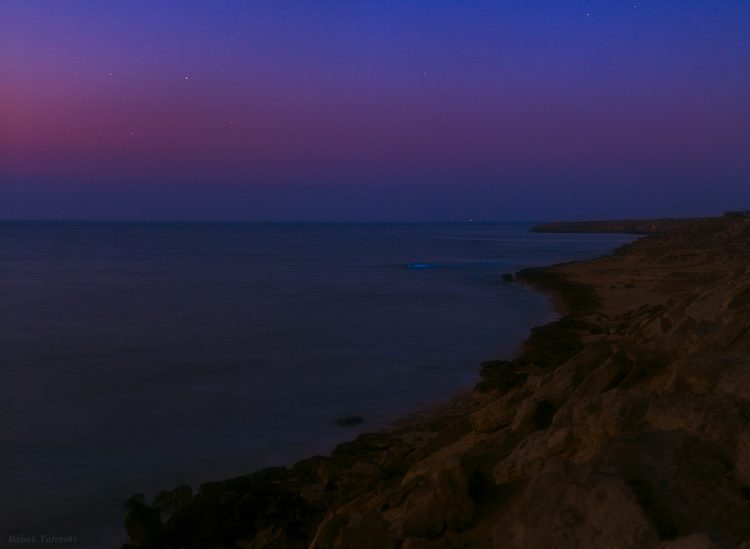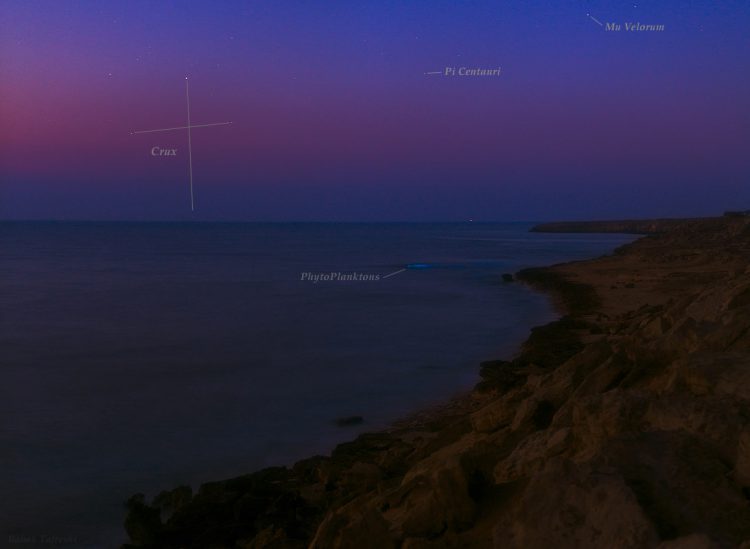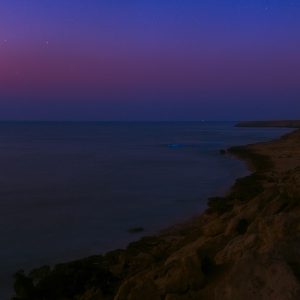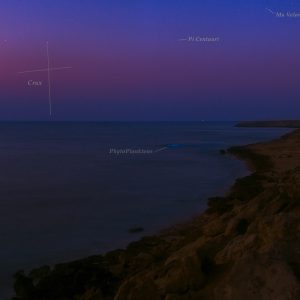Southern Cross over the Persian Gulf
Description
In an ideally clear winter morning stars of the southern Cross appear just few degrees over the southern horizon of Qeshm Island in the Persian Gulf. Move the slider on the image to recognize the cross. Note that the lucky image has also captured a colony of plankton shining by bioluminescence activity. As added by the photographer “There are a lot of news and tension about the Persian Gulf and the strait of Hormuz. I was there in the peaceful island of Qeshm where nature and traditional life do not attention to all the hazards and threats around it. Qehsm is located in the strait of Hormuz and it is the largest island in the Gulf. About half of the island is biopark, a UNESCO reserve biosphere. In the morning twilight I managed to record a long-awaiting scene in my plans: Crux (the Southern Cross) above the Persian Gulf. This might be the first imaging record of this small but notable far southern constellation in the region. The cross rises few degrees over Qeshm horizon but usual dust and moisture in the region often block the view. In this ideal clear morning still the bottom star of the Crux (Acrux) is hidden in the dust. The shores of Ras Al khaymah in the Emirates is toward the Southern Cross direction, some 100km away, while the closest star of the Crux (Gamma, the upper one) is still 10 million million time farther away, at about 90 light years away. I was also surprised to capture an interesting biological phenomenon. Colonies of phytoplankton made florescent green flashes in the approaching waves near the shore. The waves were bringing the shining plankton to the surface for few seconds. It is interesting why they do the bioluminescence activity. They attract larger fish and other marine species so they come and eat the smaller fish which are the hunters of plankton! They have a very unique way of fighting with their hunters!”




comments (1)